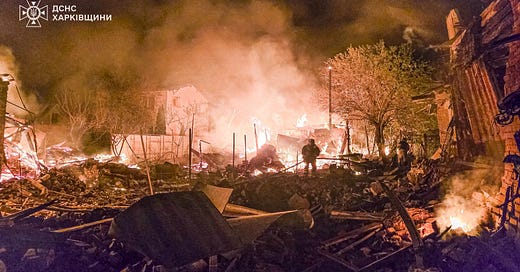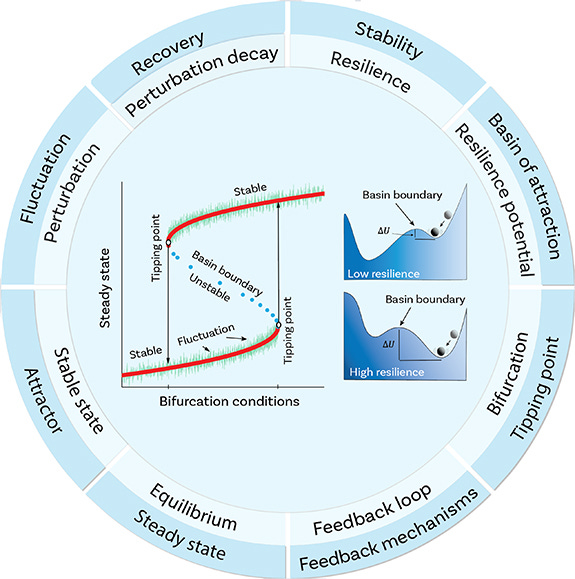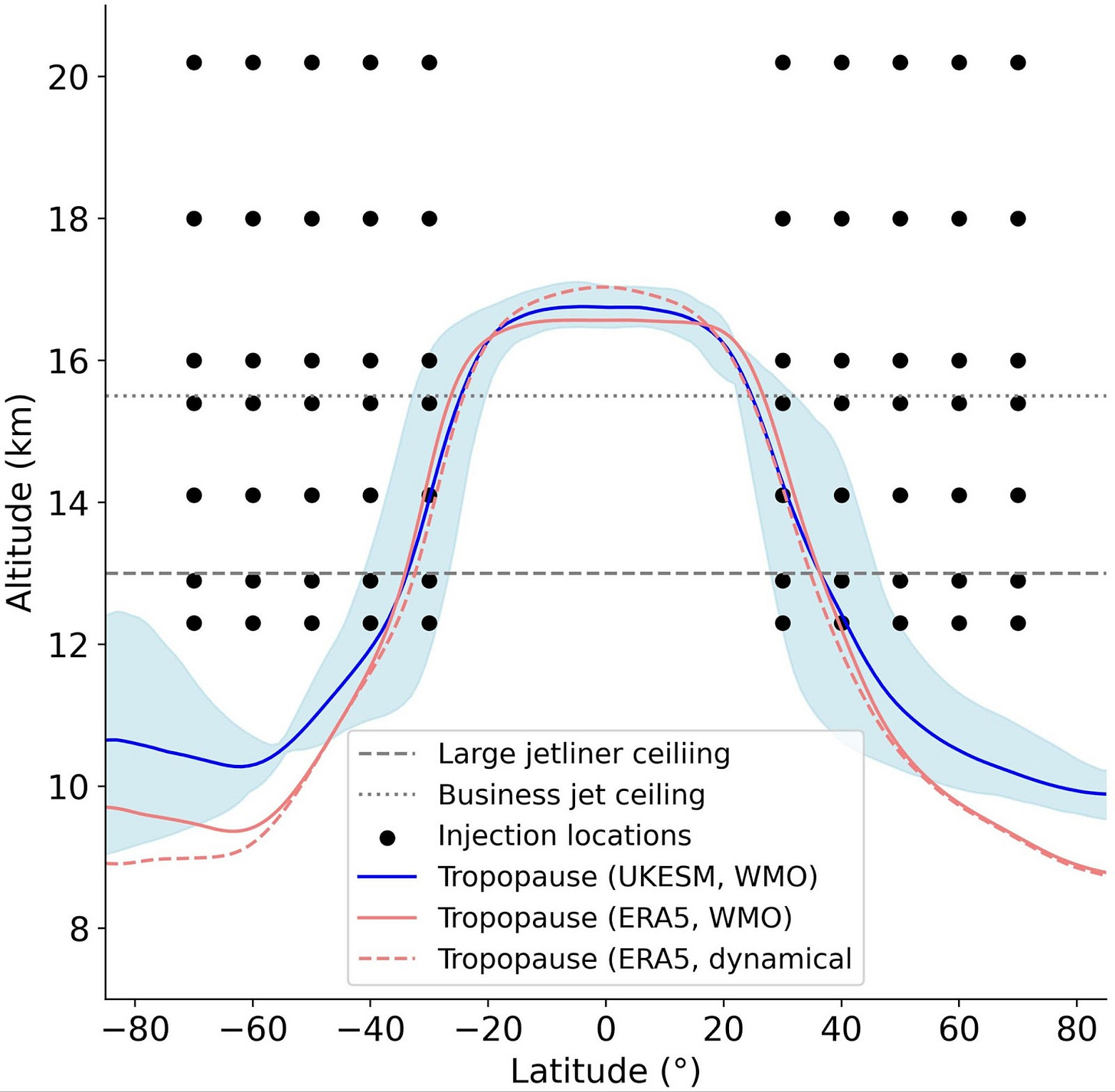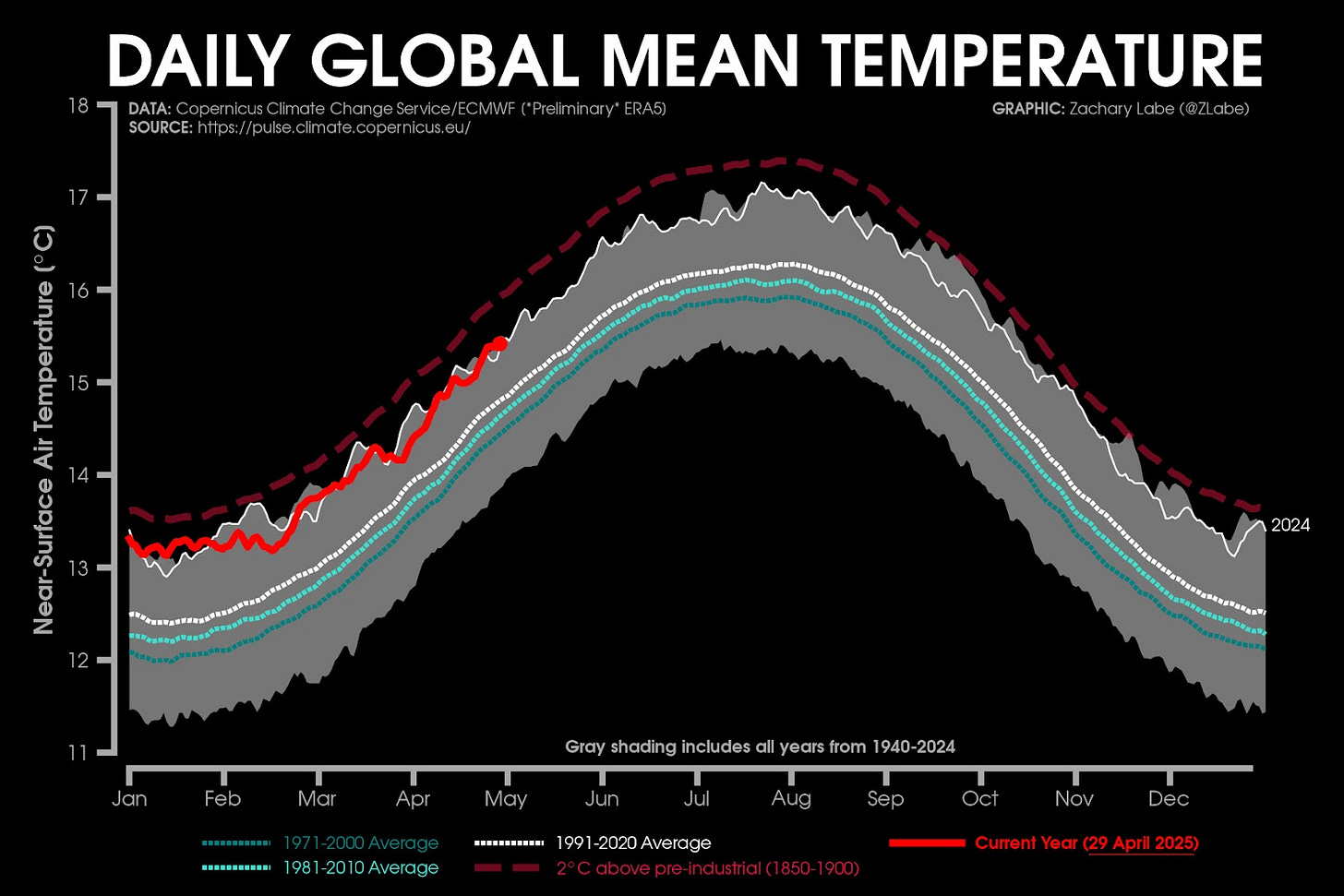Last Week in Collapse: April 27-May 3, 2025
Heat waves, airstrikes, impunity, pollution, and a region plunged into darkness.
Last Week in Collapse: April 27-May 3, 2025
This is Last Week in Collapse, a weekly newsletter compiling some of the most important, timely, useful, soul-crushing, ironic, amazing, or otherwise must-see/can’t-look-away moments in Collapse.
This is the 175th weekly newsletter. You can find the April 20-26, 2025 edition here on Reddit if you missed it last week. Thank you for subscribing to the Substack; your support and engagement helps keep this newsletter going every week.
——————————
Earth’s fastest warming place, the Arctic, is undergoing some changes. The permafrost is melting, the tundra is greening, and the ecosystems are changing. “Species turnover” is common, according to the study in Nature. “Proportions of species gains and losses were greater where temperatures had increased the most. Shrub expansion, particularly of erect shrubs, was associated with greater species losses and decreasing species richness…temperature and plant–plant interactions {are} emerging as the main drivers of change.”
A landslide in Peru killed two. Wildfires in Israel—the worst in a decade—approach Jerusalem. Brutal heat wave conditions—as high as 50 °C in parts of Pakistan—hit India & Pakistan at the end of April, worse and ahead of schedule. Permafrost continues to melt in Russia, where about two thirds of the land is covered in permafrost; scientists are also concerned about centuries-old diseases emerging from the ice. A study on tree ring sizes, published in NPJ, determined that last summer was Scandinavia’s warmest in 2000+ years.
A study in PNAS estimates a 15% chance of an 8.0 magnitude earthquake striking the western coast of North America within the next 50 years. The scientists say such an event could collapse coastal land up to six feet (two meters) and also raise the sea level; it is also hard to plan for, unless you simply move away before it happens. Another study, in Environmental Research Letters, attempts to reinterpret the notions of resilience and tipping points in dynamic systems. This complex piece of research attempts to mathematize systems theory, and emphasizes the randomness of “bifurcation points,” phase space, and more. It’s hard to summarize, and even harder to understand.
Scientists theorized in a study published in Earth’s Future that we could scale up the geoengineering technique known as stratospheric aerosol injection (SAI) without building new, high-altitude aircraft. Using existing fleets of jets would enable more countries to begin SAI operations, and at a much faster pace, but with consequences. This approach “would have strongly reduced efficiency and therefore increased side-effects for a given global cooling. It would also produce a more polar cooling distribution, with reduced efficacy in the tropics.” Current passenger planes fly at a maximum altitude of about 12 km, and ideal SAI would take place at altitudes above 20 km. According to the lead author, “At this lower altitude, stratospheric aerosol injection is about one-third as effective. That means that we would need to use three times the amount of aerosol to have the same effect on global temperature, increasing side effects such as acid rain.”
A “full-blown wildfire and forest health crisis” is the pretest being used by the U.S. Department of Agriculture to streamline deforestation of some national forests in Georgia. The crisis in question involves proliferation of native species, heightened wildfire risk, and pest/disease outbreaks among the wildlife. And while some nations move to draft a treaty protecting life in the high seas, the U.S. is moving full-steam ahead on plans to mine rare earth minerals from the seafloor, with whatever attendant environmental consequences.
A 45-page report on the triple threat of climate change, conflict, and hunger examines their impact across 9 developing countries.
“As climate change renders certain areas uninhabitable due to rising sea levels, desertification or extreme weather events, populations are forced to migrate….people who said climate hazards were making it difficult for them to access water or food were 27% more likely to have witnessed conflict….almost 90% of people agreeing (somewhat or completely) to the statement that climate change poses a serious threat to their family….The extraction of natural resources is necessary to make the transition to green economies, but demand for natural minerals has driven human rights abuses….The very resource that’s integral to help the world transition to a low-carbon economy and slow climate change, could also exacerbate climate change at the same time….”
Kazakhstan set new April records in the last week of the month. Parts of Afghanistan meanwhile hit 46 °C (115 °F). The heat wave hit Pakistan, too, with similar temperatures, where demand for electricity forced load-shedding onto the population in Karachi (metro pop: 18M). Snowfall in the Himalayas hit a 23-year low, portending a future water crisis that may spiral into serious conflict soon enough. China’s temperatures in April broke a 64-year record...and in May. The Moscow area felt record snowfall for the first few days of May.
Heat wave in South Africa, and in Iraq, and new APril highs in Indonesia closed out the month. Global mean temperatures are hovering at their record high and a dust storm passed through 10 countries in the Middle East. The Greek island of Lesvos declared an emergency for one month over low water levels, while a reservoir in Syria has seen its levels drop so low that electrical production will be prevented if it drops one more meter.
A study from two weeks ago states that forests recover from wildfires less quickly now than they used to—especially those afflicted from megafires. The primary reasons behind this delayed recovery are drier soil and temperature changes.
——————————
On Monday, a sudden power outage across most of Portugual, Spain, and parts of France left 55M people without electricity for about 10 hours. It was one of Europe’s worst power outages, and the cause is still unclear. The incident highlighted human dependence on electricity, stranding passengers in trains and metros, shutting down electrical payment systems, and leaving emergency services dependent on generators. At least five people died as a result. Imagine if it happened during a vicious heat wave, or another inconvenient moment. One day it might will.
Immunologists are warning that the progression of measles has demonstrated the reality of a “post-herd-immunity world” in which we are trapped. The U.S> measles outbreak now spans 29 states, with over 900 confirmed cases.
Keep reading with a 7-day free trial
Subscribe to Last Week in Collapse to keep reading this post and get 7 days of free access to the full post archives.









